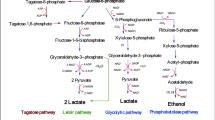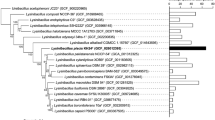Abstract
The aim of present study was the isolation and characterization of thermophilic bacteria from three different hot springs in Erzurum, Turkey. For this purpose, 85 bacteria were isolated and characterized by ERIC-PCR genomic fingerprinting and classical identification methods such as morphological, physiological and biochemical characteristics. According to the results, 29 bacterial isolates with different band profiles were analyzed by 16S rRNA gene sequencing and identified as belonging to the genus of Bacillus, Pseudomonas, Silanimonas, Thermomonas and Thauera. This is the first report on the isolation of Silanimonas lenta, Thauera sp. and Thermomonas haemolytica from Turkey Hot Springs. The amylase, lipase and protease enzyme production potentials of the isolates were 80%, 91.25% and 81.25%, respectively. Moreover, 56.47% of the isolates (48) were able to produce all of these enzymes. Therefore, the results of the study indicated that these bacteria and their enzymes can be used as a source of industrial enzymes.


Similar content being viewed by others
References
Miquel P (1888) Monographie d'u bacille vivant au-dela' de 70"centigrades. Ann Microgr 1:3–10
Brock TD, Freeze H (1969) Thermus aquaticus gen. n. and sp. n., a nonsporulating extreme thermophile. J Bacteriol 98:289–297
Ramaley RF, Hixson J (1970) Isolation of a nonpigmented, thermophilic bacterium similar to Thermus aquaticus. J Bacteriol 103:527–528
Oshima T, Imahori K (1974) Description of Thermus thermophilus (Yoshida and Oshima) comb. nov., a nonsporulating thermophilic bacterium from a Japanese thermal spa. Int J Syst Bacteriol 24:102–112
Baltaci MO, Genc B, Arslan S, Adiguzel G, Adiguzel A (2017) Isolation and characterization of thermophilic bacteria from geothermal areas in Turkey and preliminary research on biotechnologically important enzyme production. Geomicrobiol J 34(1):53–62. https://doi.org/10.1080/01490451.2015.1137662
Mohammad BT, Al Daghistani HI, Jaouani A, Abdel-Latif S, Kennes C (2017) Isolation and characterization of thermophilic bacteria from Jordanian Hot Springs: Bacillus licheniformis and Thermomonas hydrothermalis isolates as potential producers of thermostable enzymes. Int J Microbiol. https://doi.org/10.1155/2017/6943952
Chrisnasari R, Verina D, Tapatfeto AC, Pranata S, Patjajani T, Wahjudi M, Purwanto MGM (2018) Isolating and characterising chitinolytic thermophilic bacteria from Cangar Hot Spring, East Java. Pertanika J Trop Agric Sci 41(3):1437–1448
Stetter KO (2013) A brief history of the discovery of hyperthermophilic life. Biochem Soc Trans 41:416–420. https://doi.org/10.1042/BST20120284
Gomez J, Steiner W (2004) The biocatalytic potential of extremophiles and extremozymes. Food Technol Biotechnol 2:223–235
Meintanis C, Chalkou KI, Kormas KA et al (2008) Application of rpoB sequence similarity analysis, REP-PCR and BOX-PCR for the differentiation of species within the genus Geobacillus. Lett Appl Microbiol 46:395–401
Singh AK, Tripathi BM, Sahay H et al (2010) Biochemical and molecular characterization of thermo-alkalitolerant xylanase producing bacteria from thermal springs of Manikaran, Indian. J Microbiol 50:S2–S9
Yoneda Y, Yoshida T, Yasuda H et al. (2013) A novel thermophilic, hydrogenogenic, and carboxydotrophic bacterium Calderihabitans maritimus gen. nov., sp. nov. from a marine sediment core of an undersea caldera. Int J Syst Evol Microbiol 63:3602–3608
Cihan AC, Tekin N, Ozcan B et al (2012) The genetic diversity of genus Bacillus and the related genera revealed by 16s rRNA gene sequences and ARDRA analyses isolated from geothermal regions of Turkey. Braz J Microbiol 43:309–324
Brock TD, Boylen KL (1973) Presence of thermophilic bacteria in laundry and domestic hot-water heaters. Appl Environ Microbiol 25(1):72–76
Brock TD, Brock KM, Belly RT, Weiss RL (1972) Sulfolobus: a new genus of sulfur-oxidizing bacteria living at low pH and high temperature. Arch Microbiol 84(1):54–68
Strom PF (1985) Identification of thermophilic bacteria in solid-waste composting. Appl Environ Microbiol 50(4):906–913
Slobodkin A, Campbell B, Cary SC, Bonch-Osmolovskaya E, Jeanthon C (2001) Evidence for the presence of thermophilic Fe (III)-reducing microorganisms in deep-sea hydrothermal vents at 13°N (East Pacific Rise). FEMS Microbiol Ecol 36(2–3):235–243
Goorissen HP, Boschker HTS, Stams AJM, Hansen TA (2003) Isolation of thermophilic Desulfotomaculum strains with methanol and sulfite from solfataric mud pools, and characterization of Desulfotomaculum solfataricum sp. nov. Int J Syst Evol Microbiol 53:1223–1229
Sako Y, Nakagawa S, Takai K, Horikoshi K (2003) Marinithermus hydrothermalis gen. nov., sp. nov., a strictly aerobic, thermophilic bacterium from a deep-sea hydrothermal vent chimney. Int J Syst Evol Microbiol 53:59–65
Kumar S, Tamura K, Nei M (2004) MEGA3: integrated software for molecular evolutionary genetics analysis and sequence alignment. Brief Bioinform 5:150–163
Bae J, Rhee S, Park JR, Kim B, Park Y (2005) Isolation of uncultivated anaerobic thermophiles from compost by supplementing cell extract of Geobacillus toebii in enrichment culture medium. Extremophiles 9(6):477–485
Aanniz T, Ouadghiri M, Melloul M, Swings J, Elfahime E, Ibijbijen J, Ismaili M, Amar M (2015) Thermophilic bacteria in Moroccan hot springs, salt marshes and desert soils. Braz J Microbiol 46(2):443–453. https://doi.org/10.1590/S1517-838246220140219
Adiguzel A, Ozkan H, Baris O, Inan K, Gulluce M, Sahin F (2009) Identification and characterization of thermophilic bacteria isolated from hot springs in Turkey. J Microbiol Methods 79(3):321–328. https://doi.org/10.1016/j.mimet.2009.09.026
Yilmaz B, Baltaci MO, Sisecioglu M, Adiguzel A (2015) Thermotolerant alkaline protease enzyme from Bacillus licheniformis A10: purification, characterization, effects of surfactants and organic solvents. J Enzym Inhib Med Chem 31(6):1241–1247. https://doi.org/10.3109/14756366.2015.1118687
Gormez A, Sahin F, Gulluce M, Aslan I (2013) Identification and characterization of Pseudomonas syringae isolated from apricot trees in the Erzurum Province of Turkey and evaluation of cultivar reaction. Int J Plant Pathol 95(3):525–532
Harley JP, Prescott LM (2002) Laboratory exercises in Microbiology, 4th edn. The McGraw-Hill Companies, New York
Lazo GR, Roffey R, Gabriel DW (1987) Pathovars of Xanthomonas campestris are distinguishable by restriction fragment-length polymorphism. Int J Syst Evol Microbiol 37(3):214–221. https://doi.org/10.1099/00207713-37-3-214
Louws FJ, Fulbright DW, Stephens CT, de Bruijn FJ (1995) Differentiation of genomic structure by rep-PCR fingerprinting to rapidly classify Xanthomonas campestris pv. vesicatoria. Phytopathol 85:528–536
Louws FJ, Fulbright DW, Stephens CT, de Bruijn FJ (1994) Specific genomic fingerprints of phytopathogenic Xanthomonas and Pseudomonas pathovars and strains generated with repetitive sequences and PCR. Appl Environ Microbiol 60:2286–2295
Versalovic J, Schneider M, de Bruijin FJ, Lupski JR (1994) Genomic fingerprinting of bacteria using repetitive sequence based PCR (rep-PCR). Methods Mol Cell Biol 5:25–40
Orhan F, Demircil A, Yanmis D (2017) CaCO3 and MgCO3 dissolving halophilic bacteria. Geomicrobiol J 34(9):804–810
Saitou N, Nei M (1987) The neighbor-joining method: a new method for reconstructing phylogenetic trees. Mol Biol Evol 4:406–425
Kumar S, Stecher G, Tamura K (2016) MEGA7: Molecular evolutionary genetics analysis version 70 for bigger datasets. Mol Biol Evol 33:1870–1874
Karaoglu H, Yanmis D, Gurkok S (2016) Magnesite enrichment with Pseudomonas oryzihabitans isolated from magnesite ore. Geomicrobiol J 33(1):46–51
Ertugrul S, Donmez G, Takac S (2007) Isolation of lipase producing Bacillus sp from olive mill wastewater and improving its enzyme activity. J Hazard Mater 149:720–724
Oztas Gulmus E, Gormez A (2019) Characterization and biotechnological application of protease from thermophilic Thermomonas haemolytica. Arch Microbiol. https://doi.org/10.1007/s00203-019-01728-7
Yanmis D, Baltaci MO, Gulluce M, Adiguzel A (2015) Identification of thermophilic strains from geothermal areas in Turkey by using conventional and molecular techniques. Res J Biotechnol 10:39–45
Adiguzel A, İnan K, Şahin F, Arasoğlu T, Güllüce M, Beldüz AO, Barış Ö (2011) Molecular diversity of thermophilic bacteria isolated from Pasinler Hot Spring (Erzurum, Turkey). Turk J Biol 35:267–274
Bozoglu C, Hundur S, Alaylar B, Karadayi M, Gulluce M (2015) Isolation and molecular characterization of thermophilic bacteria with xylanase activity from thermal springs in Erzurum. J Life Sci Technol 3(1):32–35
Turnbull PCB (1996) Bacillus. In: Baron S (ed) Medical microbiology, 4th edn. University of Texas Medical Branch, Galveston
Lee EM, Jeon CO, Choi I, Chang K-S, Kim C-J (2005) Silanimonas lenta gen. nov., sp. nov., a slightly thermophilic and alkaliphilic gammaproteobacterium isolated from a hot spring. Int J Sys Evol Microbiol 55:385–389
Acknowledgements
The authors would like to thank the officials of the Erzurum Technical University High-Technology Applications and Research Center (YUTAM) for their technical support.
Author information
Authors and Affiliations
Corresponding author
Ethics declarations
Conflict of interest
All authors declared that there is no conflict of interest.
Additional information
Publisher's Note
Springer Nature remains neutral with regard to jurisdictional claims in published maps and institutional affiliations.
Rights and permissions
About this article
Cite this article
Oztas Gulmus, E., Gormez, A. Identification and Characterization of Novel Thermophilic Bacteria from Hot Springs, Erzurum, Turkey. Curr Microbiol 77, 979–987 (2020). https://doi.org/10.1007/s00284-020-01880-0
Received:
Accepted:
Published:
Issue Date:
DOI: https://doi.org/10.1007/s00284-020-01880-0




